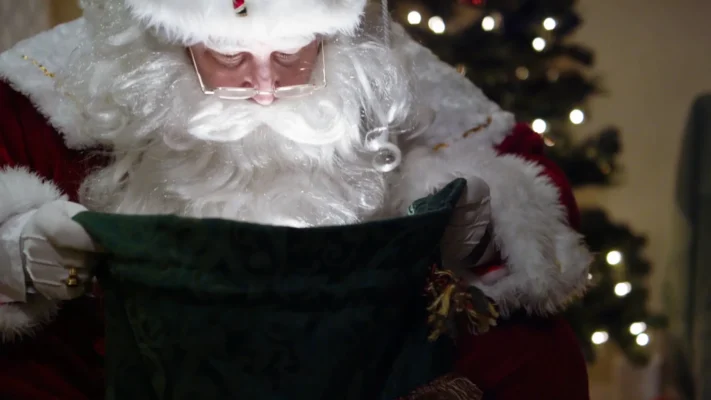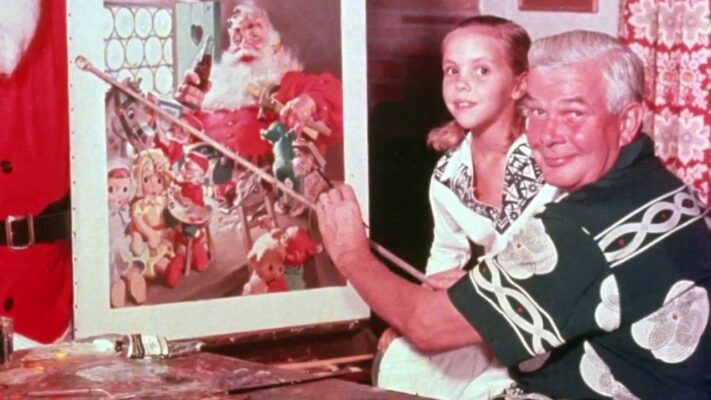SPORT & LIFESTYLE NEWS
Was Santa Claus a Real Person?
As the holiday season approaches, many people wonder: Was Santa Claus a Real Person? The jolly old man in the red suit who delivers gifts to children around the world has become a beloved symbol of Christmas. But is there any truth behind the story of Santa Claus, or is he purely a product of holiday folklore? Find the answer with AlibayTrendy Store in the article below now.
Was Santa Claus a Real Person?

To understand whether Santa Claus was a real person, we need to delve deeply into the origins of this enchanting legend. The modern depiction of Santa Claus, complete with his red suit and jovial demeanor, is primarily derived from St. Nicholas of Myra, a historical figure who lived during the 4th century. St. Nicholas was a Christian bishop in the ancient Roman town of Myra, which is located in what is now modern-day Turkey. This small town, though seemingly modest, became the backdrop for the extraordinary life of this revered figure.
St. Nicholas is celebrated in Christian tradition for his remarkable acts of generosity and his numerous miraculous deeds. He was known for his deep compassion for the poor and his unwavering commitment to helping those in need. Among his many acts of kindness, one of the most famous stories is that of his anonymous gift-giving to impoverished families, which he did to protect them from destitution. In addition, he was reputed to have performed several miracles, such as calming storms at sea and restoring life to deceased children. These stories of St. Nicholas’s benevolence and supernatural interventions began to spread throughout Europe, capturing the imagination of various cultures.
As the legend of St. Nicholas traveled from region to region, it underwent numerous transformations, blending with local customs and traditions. Each culture adapted the tale to fit its own values and folklore, gradually shaping the figure into the beloved Santa Claus we recognize today. Over centuries, the historical figure of St. Nicholas evolved from a humble bishop known for his charitable works into the magical and iconic Santa Claus who embodies the spirit of giving during the holiday season.
The Evolution of Santa Claus
The figure of Santa Claus began to take shape as different cultures and their unique customs and traditions contributed to the evolving legend. This process of transformation and amalgamation was particularly pronounced during the 19th century when Santa Claus started to take on the characteristics that are familiar to us today. This period was crucial in defining the modern image of Santa Claus, thanks to the influential work of several writers and artists who each played a significant role in shaping the iconic figure.

One of the most pivotal contributions came from Clement Clarke Moore, whose famous poem “A Visit from St. Nicholas,” more commonly known as “The Night Before Christmas,” was first published in 1823. Moore’s poem introduced several key elements that became central to the Santa Claus legend. His vivid description of Santa’s sleigh, pulled by reindeer, and the delightful image of Santa as a rotund, jolly figure with a twinkling eye, were instrumental in cementing the modern portrayal of Santa Claus. The poem’s portrayal of Santa as a benevolent and magical figure who could enter homes through chimneys and deliver gifts to children added layers of whimsy and enchantment to the character.
Simultaneously, the work of artist Thomas Nast was crucial in visually defining Santa Claus. Nast, a political cartoonist for Harper’s Weekly, began illustrating Santa Claus in the 1860s. His illustrations depicted Santa in a fur-trimmed red suit and established many of the now-iconic elements of Santa’s appearance, such as the North Pole workshop and Santa’s list of names. Nast’s drawings helped solidify the image of Santa Claus as a cheerful, rotund man who was not only a symbol of Christmas joy but also a figure who maintained a close connection with the holiday’s spirit of generosity and kindness.
Together, Moore’s literary contributions and Nast’s artistic depictions played a critical role in shaping Santa Claus into the recognizable figure we celebrate today. Their combined efforts helped to crystallize the modern image of Santa Claus as a symbol of Christmas magic and joy, embodying the festive spirit in a way that continues to delight and inspire people around the world.
Was Santa Claus a Real Person or is he purely a product of holiday folklore?
While the modern Santa Claus we celebrate today is a product of various cultural influences and not attributable to a single historical figure, the character’s origins can be traced back to the real-life St. Nicholas of Myra. St. Nicholas, a 4th-century Christian bishop from the ancient town of Myra, located in what is now Turkey, was a real person whose deeds and reputation profoundly impacted his community and beyond. Known for his extraordinary generosity and kindness, St. Nicholas earned a place of reverence in Christian tradition. His acts of charity, including the miraculous assistance he provided to the poor and his interventions on behalf of those in need, became the foundation for the legendary figure that would evolve over centuries.

Despite the historical basis provided by St. Nicholas, the Santa Claus of contemporary culture, complete with his magical sleigh, reindeer, and North Pole workshop, is a product of folklore, literary imagination, and popular culture. The transformation from the historical St. Nicholas to the modern Santa Claus involved a complex interplay of cultural adaptations and mythological enhancements. As the legend of St. Nicholas spread through various regions, it merged with local customs, folklore, and mythical elements. This process of evolution was significantly shaped by literary works, artistic representations, and societal changes.
The Santa Claus of today, with his whimsical and magical attributes, is a far cry from the historical bishop. The image of Santa as a cheerful, rotund man who travels the world in a sleigh to deliver presents to children embodies a blend of various traditions and creative interpretations. These modern elements of Santa Claus, such as the North Pole workshop staffed by elves and the idea of Santa keeping a list of children’s names, are products of popular culture that have transformed and expanded upon the original stories of St. Nicholas.
Now that you’ve explored the origins and evolution of Santa Claus, from a historical figure to the joyful icon we know today, why not add a touch of holiday magic to your wardrobe? Don’t miss out on the chance to own a unique Santa Hawaiian shirt! At AlibayTrendy Store, we offer high-quality Santa Hawaiian shirts featuring fun and stylish designs, perfect for standing out at holiday parties or simply enjoying the festive season in a cheerful way.
